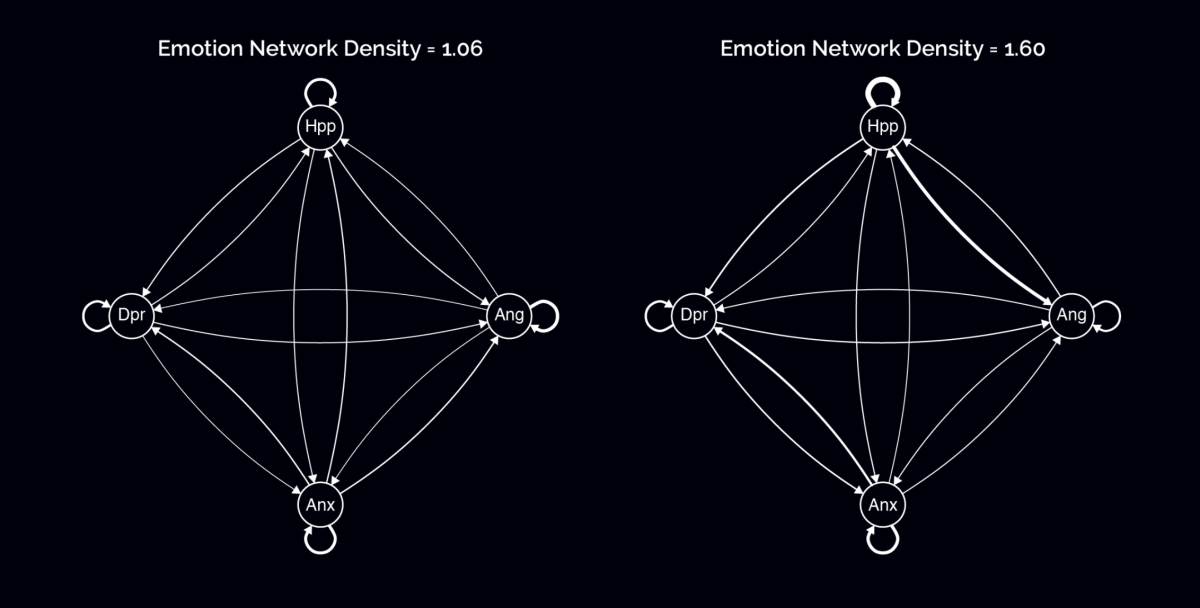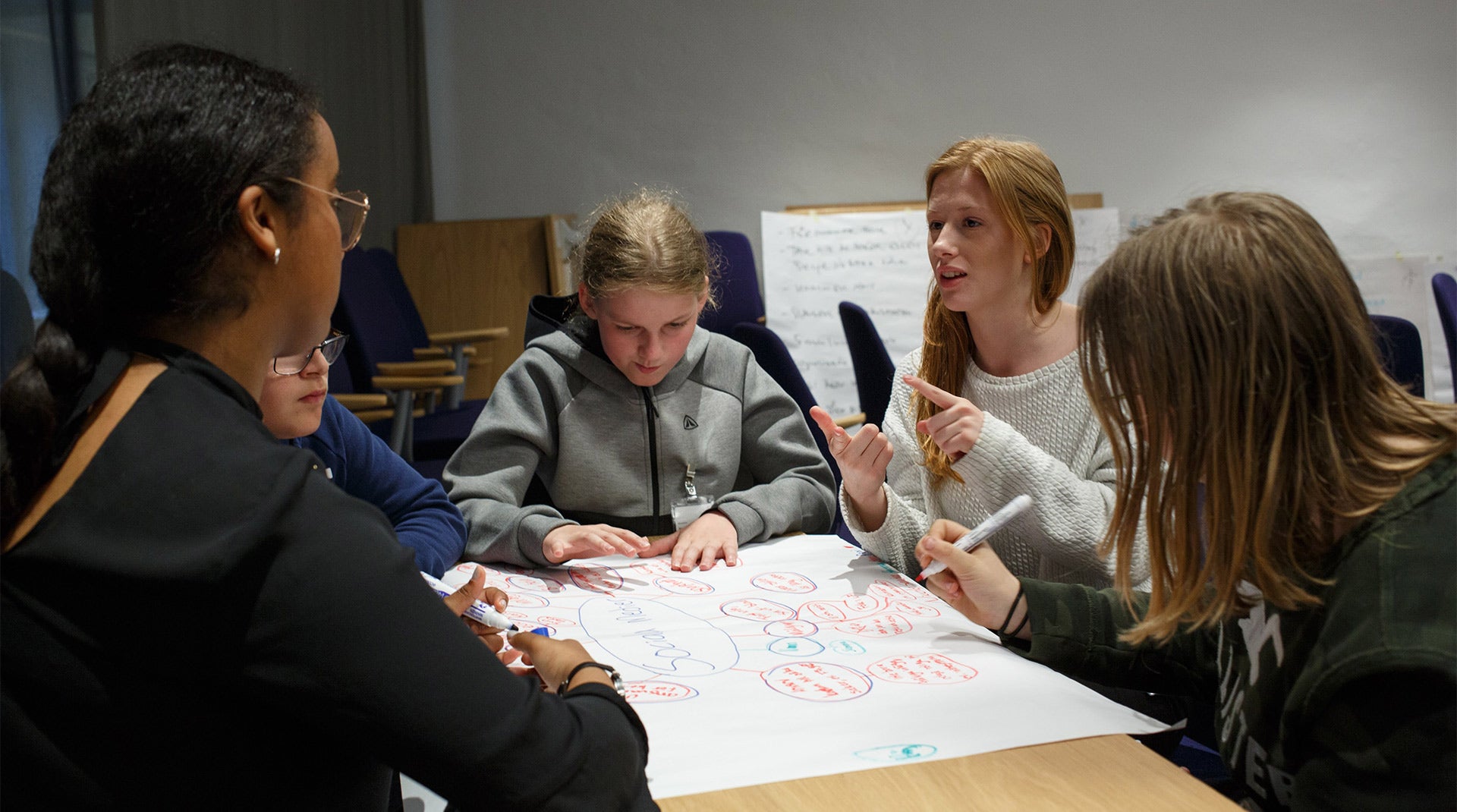
Research
We have three main lines of research. Common to all is an obsession with intensively measuring daily experiences in the wild and online, modeling behavior as the output of a complex system, and providing insights into health and well-being.
Photo Credit (top image): Bewakoof.com Official / Unsplash
Curiosity online and in the wild
A recent research direction is to understand what curiosity is, how it manifests in daily life, and how it changes across the lifespan. Our first paper on curiosity examining how inconsistencies in the extent to which curiosity is experienced from day to day may have implications for well-being. Our most recent project had people explore Wikipedia for approximately 5 hours over the course of 21 days. We made networks of their explorations to capture individual differences in curious practice.
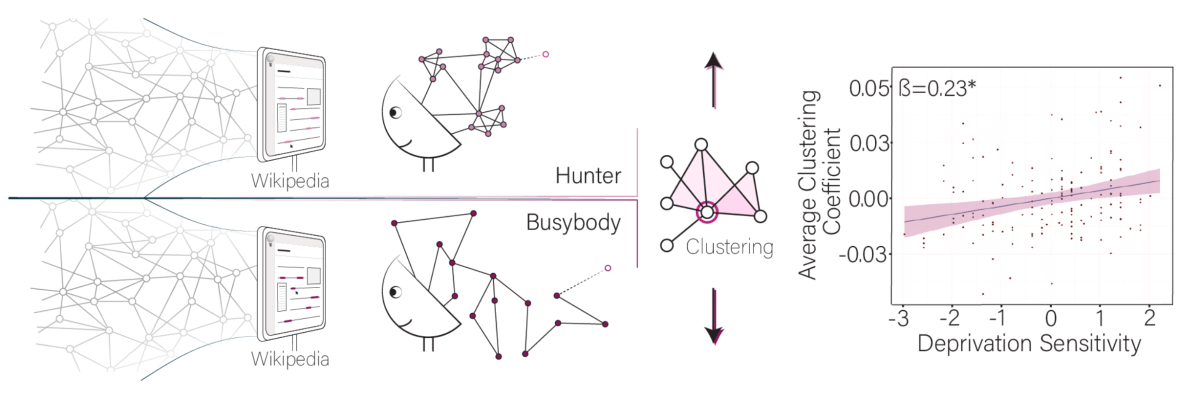
Short-term dynamics in the causes and consequences of substance use
Current work in this area uses intensive repeated measures designs and analysis techniques to examine day-to-day variability in affective and cognitive functions and how this within-person variability relates to substance use risk. Our 2014 paper provides more background and a map showing where we’re heading. Some of our initial work showed that sensation-seeking tendencies fluctuate from day to day and that these fluctuations are meaningfully related to risk-taking in adults. We are currently collecting data to extend this work to adolescents.
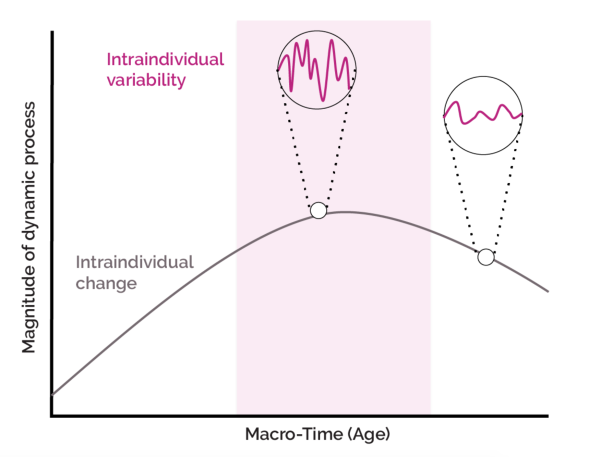
Other work on substance use in adults focuses on short-term dynamics in the causes and consequences of substance use. Our work in this area has demonstrated that the level of smoking satiety in daily smokers moderates the extent to which monetary incentives improve cognitive control. This has implications for attempts to use monetary contingencies to reinforce abstinence as is common in contingency management interventions. Other work in this area demonstrated that day-to-day changes in sleep impact drug craving in patients in treatment for substance use disorder (see our 2016 and 2017 papers). This work highlights the importance of examining the daily lives of participants and patients for understanding how daily experiences may influence drug use and, ultimately, how daily processes may be targeted by interventions to promote continued drug abstinence. Our other work from 2016 and 2017 looks at how alcohol use impacts sleep.
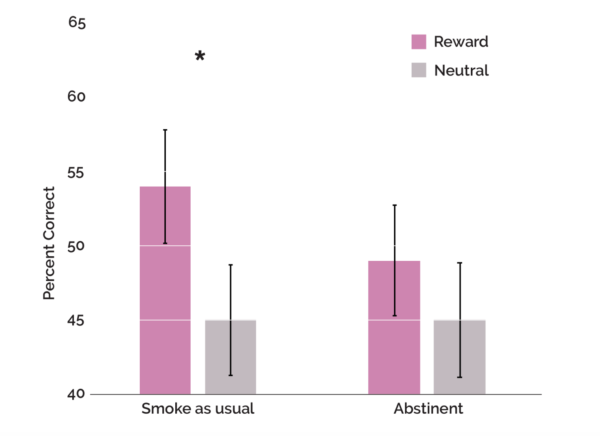
Emotion dynamics in daily life
Emotional disturbances are a prevalent feature in psychopathology, and difficulties in the ability to regulate emotions predict numerous forms of psychopathology. Our research in this area examines how we can use network science (an increasing obsession of ours: see these 2019a, 2019b, and 2020 papers) to model our daily emotional lives in ways that align with our rich theories on emotion (2019) and to understand how networks of the brain involved in cognitive control may support adaptive responses to emotional experiences in daily life (2018).
